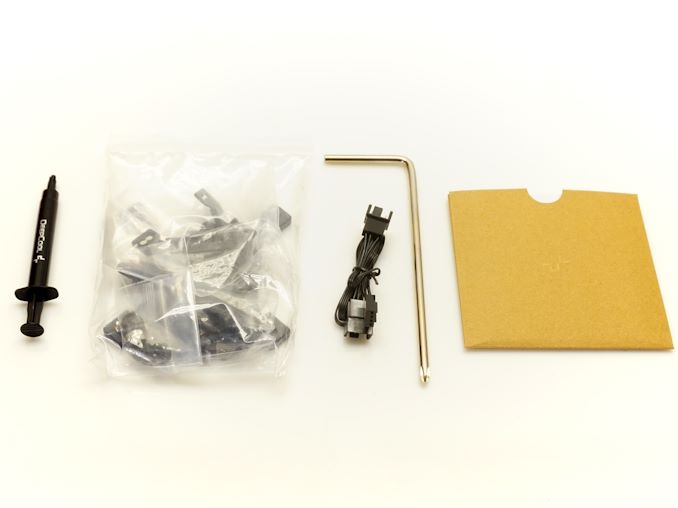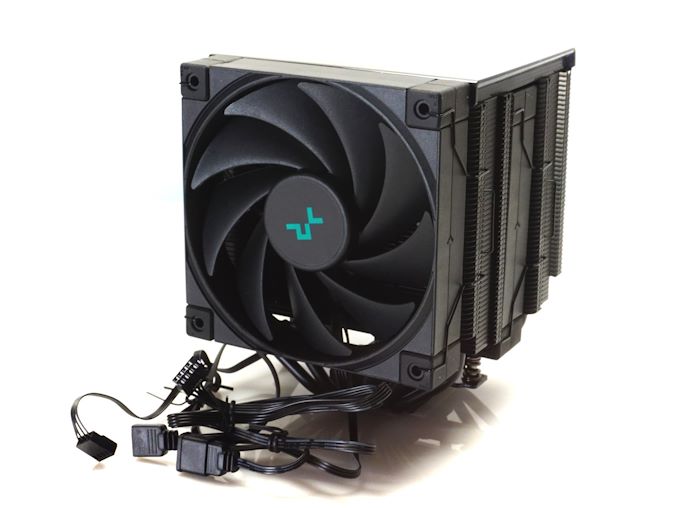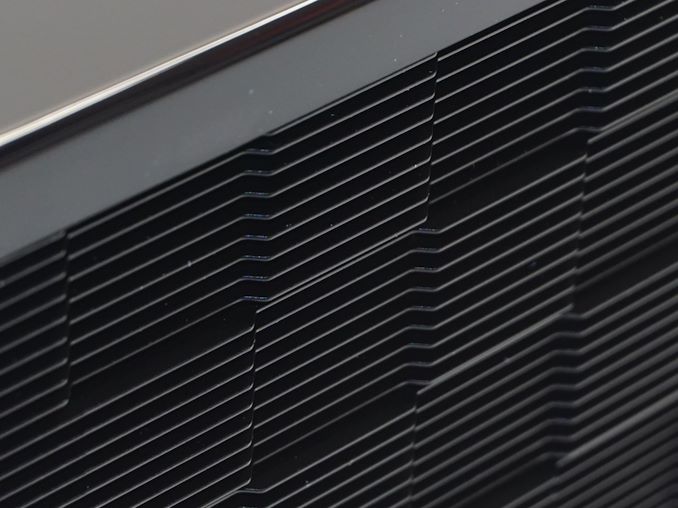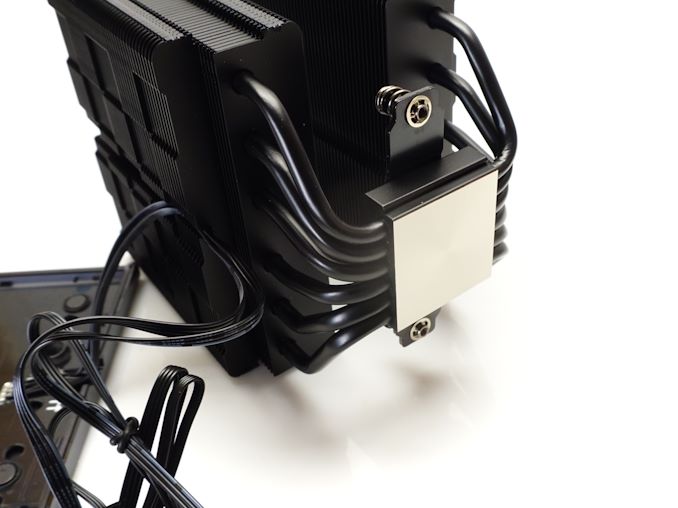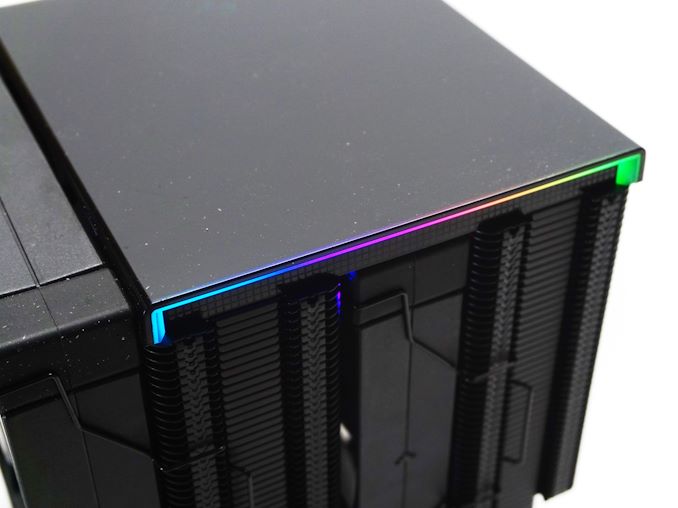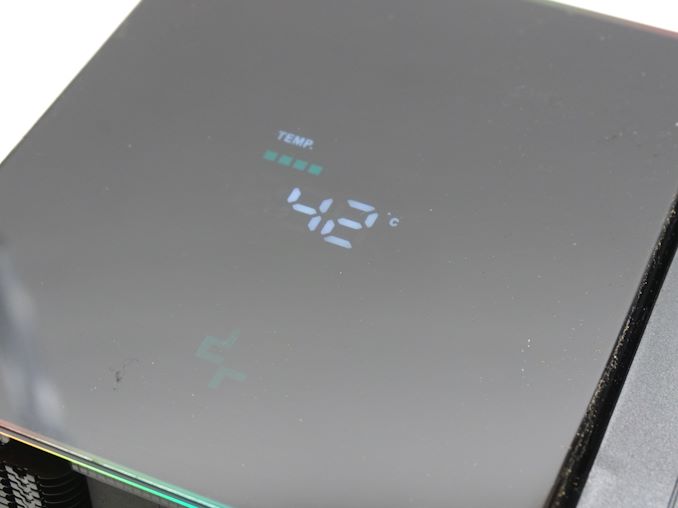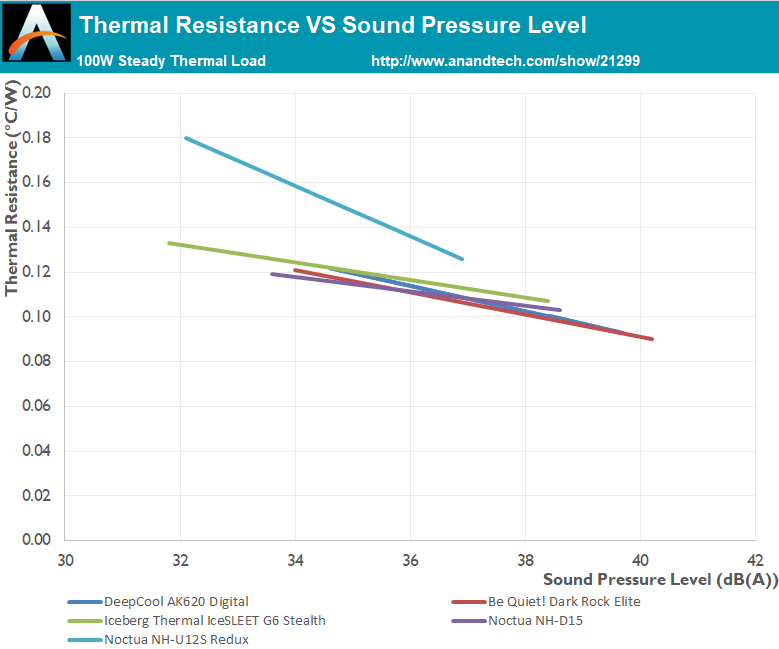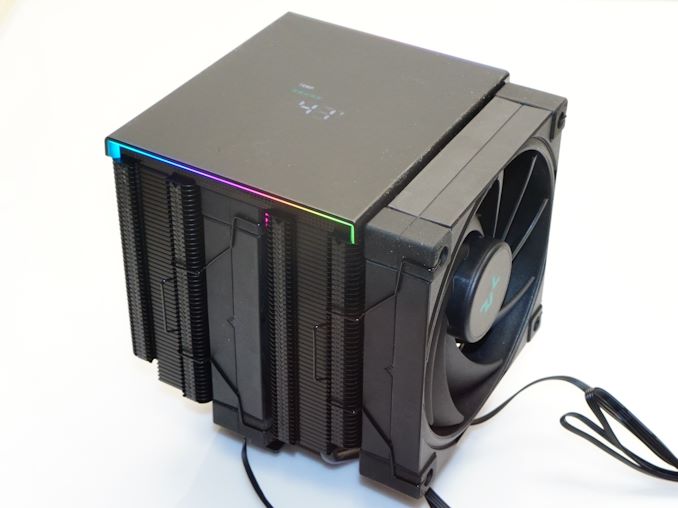
The DeepCool AK620 Digital CPU Cooler Review: Big, Heavy, and Lit
2024-03-28Typical CPU coolers do the job for standard heat management but often fall short when it comes to quiet operation and peak cooling effectiveness. This gap pushes enthusiasts and PC builders towards specialized aftermarket solutions designed for their unique demands. The premium aftermarket cooling niche is fiercely competitive, with brands vying to offer top-notch thermal management solutions.
Today we’re shining a light on DeepCool’s AK620 Digital cooler, a notable entry in the high-end CPU cooler arena. At first blush, the AK620 Digital stands out from the crowd mostly for its integrated LCD screen. Yet aesthetics aside, underneath the snappy screen is a tower cooler that was first and foremost engineered to exceed the cooling needs of the most powerful mainstream CPUs. And it’s a big cooler at that: with a weight of 1.5Kg and 162mm tall, this is no lightweight heatsink and fan assembly. All of which helps to set it apart in a competitive marketplace.
With that in mind, let’s delve into how the AK620 Digital measures up in performance and its place in the aftermarket cooling landscape.
| DeepCool AK620 Digital CPU Cooler Specifications | |||
| Type | Tower Cooler | ||
| Dimensions | 129 x 138 x 162 mm | ||
| Fans | 2 x 120 mm FK120 FDB Fan 1850 RPM (max) |
||
| RGB | Yes | ||
| Supported Sockets | Intel: LGA1700, LGA1200, LGA115x, LGA2011, LGA2066
AMD: AM5, AM4 |
||
| Warranty | 3 Years | ||
| Price | $80 | ||
The DeepCool AK620 Digital CPU Cooler is presented in sleek packaging, featuring a simple cardboard box embellished with a stylish ribbon for an added touch of elegance. The cooler is securely packaged for transit, nestled in a nylon bag and cushioned by foam inserts to ensure it arrives in pristine condition. On the back of the box, key features and performance highlights of the AK620 Digital are prominently displayed, offering potential purchasers a concise overview of what this cooler brings to their PC setup.
Opening up the packaging uncovers a small cardboard box with the essential mounting accessories alongside basic, straightforward instructions. There is a syringe of premium thermal compound and a very basic screwdriver for the installation of the cooler. The included mounting kit is compatible with a wide array of CPU sockets, making the AK620 Digital versatile for use with numerous Intel (1700 / 1200 / 115x / 2066 / 2011) and AMD (AM5 / AM4) processors.
The DeepCool AK620 Digital CPU Cooler stands out in its category with a formidable dual tower design, integrating six premium 6 mm copper heatpipes that are transferring the thermal energy from the base to the dual large fin arrays. The designer made the cooler black in its entirety, spraying every metallic part with a matte black paint and using two all-black fans. This cooler reaches a height of 162 mm, so compatibility is a consideration for several cases. At nearly 1.5 kg, the AK620 Digital is among the most substantial coolers on the market, highlighting the importance of removing the cooler from the motherboard during system relocation to prevent any potential damage.
DeepCool’s engineers have designed the fin arrays to be quite dense. The front intake and rear exhaust form a chessboard pattern, possibly as a measure to reduce aerodynamic noise, yet the fins facing the center fan are perfectly straight. The front array has an additional notch for the digital display’s cables to run through, improving cable management a little. We also found the top fin array scratched from some kind of tool, probably during the manufacturing process, but it is under the top cover so the factory quality control probably missed it.
The base of the DeepCool AK620 Digital is a rudimentary metallic block that braces the heatpipes and contact plate, while also acting as a support for the mounting brace. Its top and mounting brace are both sprayed with the same satin black paint as the rest of the cooler. The lowermost part of the base, the contact plate, is made out of solid copper, as is on any high-quality cooler nowadays – however, DeepCool took it a step further and also plated the copper, creating a perfect mirror finish that will not oxidize over time.
One of the most prominent features of the AK620 Digital is its very high-quality fans. DeepCool is using two FK120 (DF1202512CM) fans with fluid-dynamic bearing (FDB) engines and custom frames with shock-absorbing material integrated. The fans have a maximum rotational speed of 1850 RPM and are high airflow/low pressure designs, with numerous small blades. This type of fan is typically used when the expected airflow resistance is minimal. The fans lock on the fin arrays with typical wire braces, which also allow the adjustment of the front fan’s mounting height in order to clear the RAM modules, if and when that is necessary. With that said, if you do need to move the fans, be sure to take into account that raising the height of the fan will both require a case with a higher clearance, and there may be a small performance loss.
The key feature of the AK620 is the digital display at its top, which operates via a JUSB motherboard header. Additionally, DeepCool has installed A-RGB LED strips across the edge of the top cover for that extra bit of flair. The operation of the digital display is separate from the RGB lighting, which is connected to an A-RGB controller header, on the motherboard or third-party. It requires the installation of a basic software driver, which offers very limited programming options, such as the switch of the temperature unit from Celsius to Fahrenheit. The display only reads and displays the CPU temperature and usage from the motherboard’s sensors, it does not affect the performance or function of the cooler in any way. The display only has one orientation, so the cooler needs to be installed in a specific orientation.
Although the testing of a cooler appears to be a simple task, that could not be much further from the truth. Proper thermal testing cannot be performed with a cooler mounted on a single chip, for multiple reasons. Some of these reasons include the instability of the thermal load and the inability to fully control and or monitor it, as well as the inaccuracy of the chip-integrated sensors. It is also impossible to compare results taken on different chips, let alone entirely different systems, which is a great problem when testing computer coolers, as the hardware changes every several months. Finally, testing a cooler on a typical system prevents the tester from assessing the most vital characteristic of a cooler, its absolute thermal resistance.
The absolute thermal resistance defines the absolute performance of a heatsink by indicating the temperature rise per unit of power, in our case in degrees Celsius per Watt (°C/W). In layman’s terms, if the thermal resistance of a heatsink is known, the user can assess the highest possible temperature rise of a chip over ambient by simply multiplying the maximum thermal design power (TDP) rating of the chip with it. Extracting the absolute thermal resistance of a cooler however is no simple task, as the load has to be perfectly even, steady and variable, as the thermal resistance also varies depending on the magnitude of the thermal load. Therefore, even if it would be possible to assess the thermal resistance of a cooler while it is mounted on a working chip, it would not suffice, as a large change of the thermal load can yield much different results.

Appropriate thermal testing requires the creation of a proper testing station and the use of laboratory-grade equipment. Therefore, we created a thermal testing platform with a fully controllable thermal energy source that may be used to test any kind of cooler, regardless of its design and or compatibility. The thermal cartridge inside the core of our testing station can have its power adjusted between 60 W and 340 W, in 2 W increments (and it never throttles). Furthermore, monitoring and logging of the testing process via software minimizes the possibility of human errors during testing. A multifunction data acquisition module (DAQ) is responsible for the automatic or the manual control of the testing equipment, the acquisition of the ambient and the in-core temperatures via PT100 sensors, the logging of the test results and the mathematical extraction of performance figures.
Finally, as noise measurements are a bit tricky, their measurement is being performed manually. Fans can have significant variations in speed from their rated values, thus their actual speed during the thermal testing is being recorded via a laser tachometer. The fans (and pumps, when applicable) are being powered via an adjustable, fanless desktop DC power supply and noise measurements are being taken 1 meter away from the cooler, in a straight line ahead from its fan engine. At this point we should also note that the Decibel scale is logarithmic, which means that roughly every 3 dB(A) the sound pressure doubles. Therefore, the difference of sound pressure between 30 dB(A) and 60 dB(A) is not “twice as much” but nearly a thousand times greater. The table below should help you cross-reference our test results with real-life situations.
The noise floor of our recording equipment is 30.2-30.4 dB(A), which represents a medium-sized room without any active noise sources. All of our acoustic testing takes place during night hours, minimizing the possibility of external disruptions.
| <35dB(A) | Virtually inaudible |
| 35-38dB(A) | Very quiet (whisper-slight humming) |
| 38-40dB(A) | Quiet (relatively comfortable – humming) |
| 40-44dB(A) | Normal (humming noise, above comfortable for a large % of users) |
| 44-47dB(A)* | Loud* (strong aerodynamic noise) |
| 47-50dB(A) | Very loud (strong whining noise) |
| 50-54dB(A) | Extremely loud (painfully distracting for the vast majority of users) |
| >54dB(A) | Intolerable for home/office use, special applications only. |
*noise levels above this are not suggested for daily use
To begin with, we are having a look at the DeepCool AK620 Digital with its two FK120 fans running at their maximum speed. We measured the top speed of the fans while attached to the heatsink at 1920 RPM, measurably higher than their 1850 RPM unobstructed maximum speed.
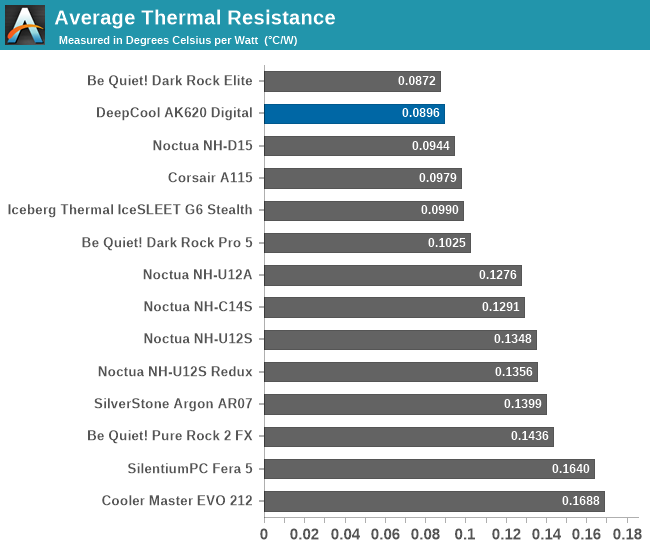
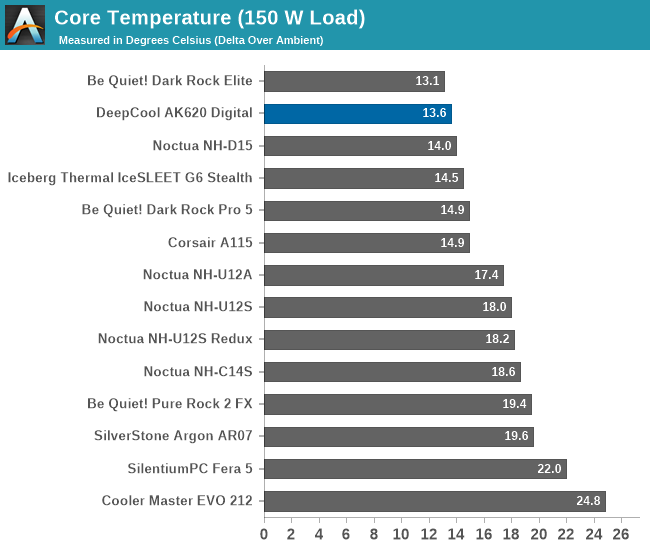
| Core Temperature, Constant Thermal Load (Max Fan Speed) |
Going by both thermal resistance and delta temperatures, the DeepCool AK620 Digital CPU Cooler is on par with the best in the game when it comes to cooling, but it’s a bit louder than average. It hits an impressive 0.0896 °C/W thermal resistance at a max fan speed of 1920 RPM, making it clear it’s built for heavy-duty use. Though it seems to be in the same league as other high-end coolers, the catch is its fans are faster.
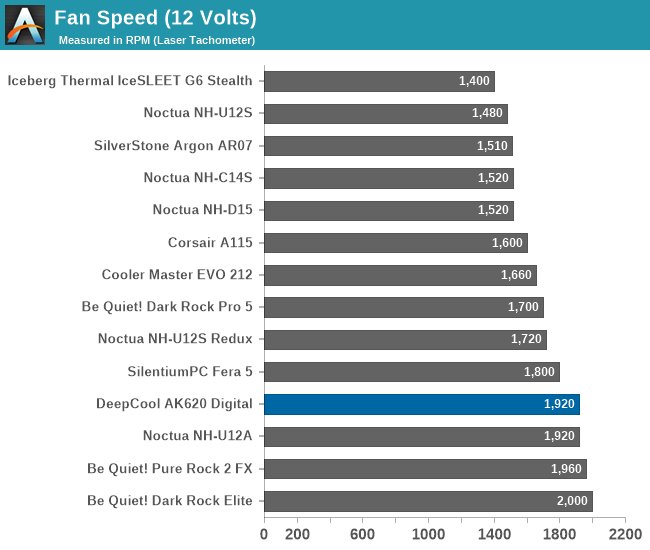
When it comes to noise, the AK620 Digital isn’t exactly whisper-quiet, clocking in at 39.7 dB(A) at full throttle. Despite the noise, it’s still a solid choice for those prioritizing cooling performance, showing DeepCool’s attempt to balance brute cooling force with noise control, even if it leans a bit more towards the loud side.

In this test we are switching things up a bit, taking a look at the cooler’s performance with the FK120 fans taken down to half speed.
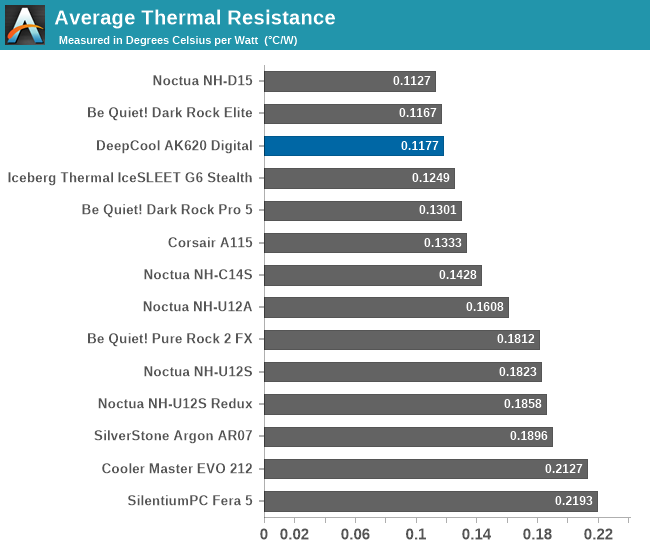
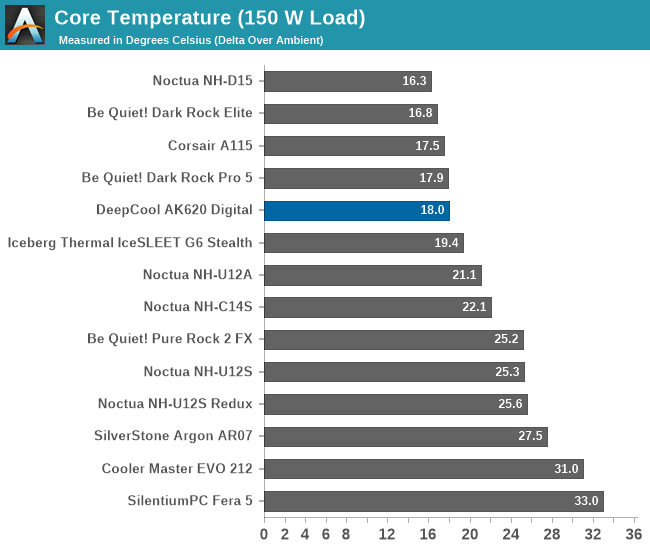
| Core Temperature, Constant Thermal Load (Low Fan Speed) |
When the fan speed of the DeepCool AK620 Digital CPU Cooler is adjusted down to 1000 RPM, there is expectedly a noticeable impact on its cooling capability, though a smaller one than what we initially expected from a cooler with low pressure fans. The thermal resistance at this lower speed registers at 0.1177 °C/W, which, despite the decrease, still places the cooler among the best in terms of thermal efficiency within its category. This level of performance under reduced fan speed suggests that the huge mass of the cooler itself, as well as the great heat exchange area, allow it to maintain great figures even when the airflow is limited.

However, even though the speed of the fans has been halved, the noise level of 34.6 dB(A) is somewhat louder compared to some competitors. Despite this increase, the noise produced at this speed is still within a comfortable listening range for everyday use, indicating a well-thought-out balance between noise and performance. This suggests that while the AK620 Digital might produce more sound pressure than some of its quieter rivals, it is not so much as to be a problem.
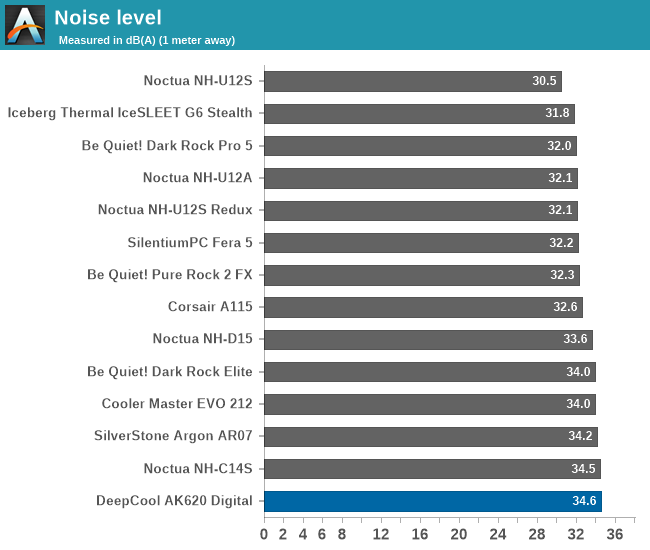
During our thermal resistance vs. sound pressure level test, we maintain a steady 100W thermal load and assess the overall performance of the coolers by taking multiple temperature and sound pressure level readings within the operating range of the stock cooling fans. The result is a graph that depicts the absolute thermal resistance of the cooler in comparison to the noise generated. For both the sound pressure level and absolute thermal resistance readings, lower figures are better.
This chart reveals where the DeepCool AK620 Digital falls compared to similar designs. Despite its exceptional thermal performance, the AK620 lands right amongst the rest of the similarly sized coolers due to its higher noise levels. Generally, it matches the performance of the best air coolers when the fan speed is high but falls behind when the fan speed is low, not really because its thermal resistance is high but because the noise is, which pushes the chart line upwards. These results suggest that the AK620 Digital can perform exceptionally if required but cannot reach the dead-silent noise figures that other offerings can.
DeepCool is making waves in the PC cooling market, and the AK620 Digital CPU Cooler is a prime example of their dedication to pushing the envelope. With its dual tower design, six copper heatpipes, and striking all-black look, this cooler doesn’t just aim for peak performance – it is a product designed to make a statement in high-end PC system. At nearly 1.5 kilograms, it is a literal heavyweight contender that promises to keep even the most demanding systems cool, all while doubling as an aesthetic centerpiece. The $80 price tag is seemingly high for a CPU cooler but, considering the performance on offer and the distinct addition of an LCD display – which is not something you see on your average cooler – the pricing is reasonably competitive.
As far as cooling performance is concerned, the AK620 Digital stands shoulder to shoulder with the best thanks to its excellent thermal resistance and ability to perform under pressure. Even when the fans dial back to half speed, it manages to maintain commendable cooling efficiency, demonstrating that DeepCool has struck a good balance between power and noise. Overall, DeepCool has tuned this design to run a bit louder than many coolers in order to achieve better cooling performance, and while that makes the cooler a poor candidate for builders specifically after whisper-quiet operation, the noise levels are still within a reasonable range overall, making it a solid choice for users who value cooling efficiency first and foremost..
DeepCool’s meticulous attention to design details, from the dense fin arrays to the premium FK120 fans, shows their commitment to quality and user satisfaction. Adjustable fan heights for RAM compatibility and a scratch-resistant copper base plate are thoughtful touches that highlight the cooler’s blend of performance and practicality.
However, what truly sets the AK620 Digital apart is its LCD display, a feature that not only adds to its visual appeal but also offers real-time system monitoring – a luxury at this price point. This inclusion, alongside its robust cooling capabilities, helps the cooler stand out in a crowded market.
To sum up, DeepCool’s AK620 Digital CPU Cooler is an impressive piece of hardware that combines style, functionality, and innovation. The company has clearly put a lot of thought into this cooler, ensuring it meets the needs of demanding users without breaking the bank. Its competitive pricing, exceptional performance, and unique LCD display position it as a top choice for builders and enthusiasts alike that want to own something a little outside the ordinary.
